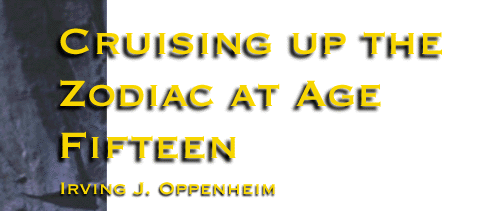|
|

|

|

|
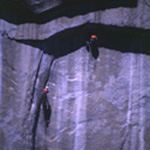
|
Two days before our climb we entered the valley in late afternoon and
ferried much of our water to the base of the climb. Then, the day before
the climb, we packed in our climbing gear and fixed two pitches.
The first pitch looks straightforward but has some very difficult aid moves,
and here I am cleaning the thin crack and corner leading to the small roof.
|
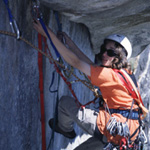
|
Daniel is at work traversing under the roof at the start of the second pitch.
This particular section was one of the few A1 stretches on the route.
Daniel uses only one pair of aiders.
|
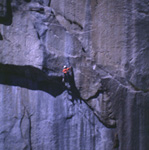
|
Daniel is turning the roof halfway through the second pitch.
He will leave a sling dangling from a piece at the lip, which could help
me enormously if I clip clean the pitch. (We have seen several parties bail
from the Washington Column when the second was frustrated by the Kor Roof, where such a
simple step by the leader would have made it easy instead.) As it were, I found no need to clip clean the
pitch and I jumared it without difficulty. We left our gear at the anchor, leaving one fixed rope to the ground.
|
|
|
|
|
|

|

|

|

|
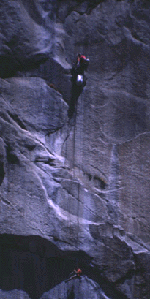
|
On day one we packed in with our remaining gear and started
jumaring the fixed line. In this picture I am at the anchor station at the
end of the second pitch and Daniel is coming up.
|
|
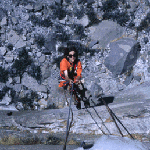
|
This is my view of Daniel as he is jumaring; it was the only time that we
were not wearing helmets, having left them at the anchor when we finished fixing
the pitch on the previous day.
|
|
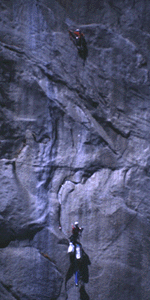
|
Daniel is leading the third pitch. On the first few days the heat was scorching.
I later learned that the valley temperature was 102 degrees. For the first three days we
needed all the water that we allowed ourselves, one gallon per person per day.
|
|
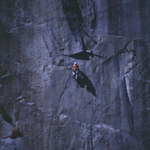
|
The third pitch ends at this ledge, and the hauling was very strenuous.
Our bags were at their heaviest, the wall is "only" vertical, and the haul line
contacted the edge of the ledge. We probably should have used a different geometry,
hauling from a point below the anchor free of the ledge itself.
|
|
|
|
|
|

|

|

|

|
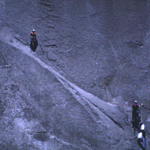
|
The fifth pitch starts with a 5.8 hand traverse and here Daniel moves to a rivet ladder before arcing left
and then back right. In keeping with the prevailing logic we combined the fifth pitch with the sixth. However,
unlike other hardmen who lead the fifth pitch without clipping, Daniel led
it and lowered from the anchor to backclean the pitch, jumaring back
up to the anchor to proceed.
|
|
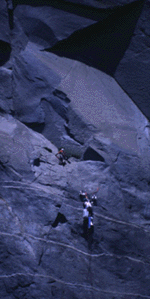
|
There are many areas where the rock strata or texture are particularly photogenic,
and Tom Evans tries to capture them when the light is right.
|
|
|
|
|
|

|

|

|

|
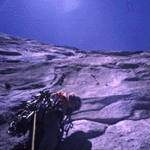
|
Somewhere on the climb, I am not sure where, the route and the sky above looked like this.
|
|
|
|
|
|

|

|

|

|
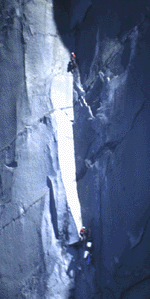
|
The route enters a left facing corner proceeding up to the Zodiac circle. The sun would typically reach
us around 11 AM, and here it hits us while Daniel is proceeding up the ninth pitch.
|
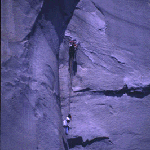
|
I am hauling the bags to the station at the top of the ninth pitch. On the first two days the hauling was difficult,
and we had to haul together using mechanical advantage, which slowed us down considerably.
When the route became overhanging Daniel generally hauled while I was cleaning the pitch, although on this pitch he
waited for me to get there.
|
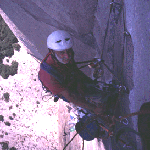
|
At the top of the corner I am belaying Daniel on the tenth pitch. We have already been on overhanging
terrain for two days or so. We use simple nylon belay seats, and we do not wear gloves or kneepads.
|
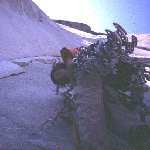
|
Daniel is starting on the tenth pitch, called the Nipple Pitch. It takes large pieces, for which we had
the large Camalots and a #11 Hex. Daniel was always climbing with an enormous rack, even though we also used
a zip line with which I would send additional pieces to him.
|
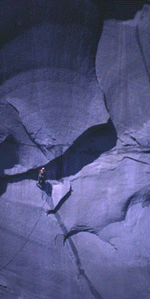
|
�I think this is the single best photograph, showing Daniel heading to the Nipple. The shadows cast
by the afternoon light capture the texture of the rock, but they also mean that the face will shortly go
into shade, at which time the photograph opportunity ceases.
|
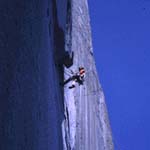
|
This photograph captures Daniel from my viewpoint, as he proceeds to the Nipple on the tenth pitch.
The rock overhangs significantly.
|
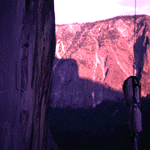
|
When I released the haulbag I saw that the pitch had overhung by about 20 or 30 feet.
|
|
|
|
|

|

|

|

|
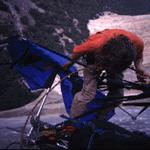
|
Getting onto the portaledge each evening marked a great transition. We had been hanging all day
but we would then sit down, lean back against the wall, put our feet up, and start eating. I think
this picture is on the morning of day five showing Daniel taking down our portaledge.
|
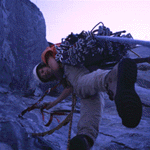
|
Daniel is starting pitch 11, the Zorro roof. The pitch ascends a multi-tier roof, and partway through
it Daniel had to place a head from a particularly awkward position.
|
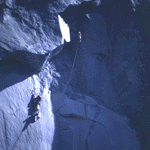
|
Daniel is moving to the first tier of the roof, and this is the last photograph that Tom Evans
took of us, because he had a route of his own to climb.
|
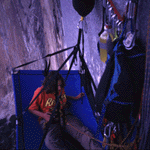
|
Every day we picked up new housekeeping tricks to organize ourselves at the bivy. At this anchor
we were able to hang a "clothesline" for our gear and we got around to coiling our ropes, making this bivy
a particularly clean one.
|
|
|
|
|

|

|

|

|
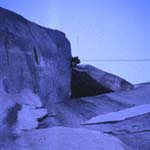
|
Pitch 14 starts at Peanut ledge and takes the #4 Friend walk, which does not show up
in this picture, and proceeds to the triangular roof. By this time, approaching the summit and
late in the afternoon of day 6, the weather had turned chilly, and Daniel led the pitch wearing a fleece.
When you exit left under the roof you finally reach terrain that is no longer overhanging, and you can then see the top.
|
|
|
|
|

|

|
|

|
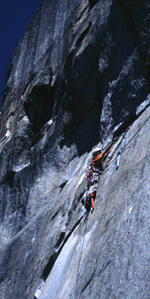
|
On day 7 Daniel was traversing on pitch 15 when he lengthened his daisy
to make an extra-long move downward from one hook to another. However, he could no longer
reach the first hook to remove it, so he stood on one hook while using a cheater stick to lift the preceding hook.
|
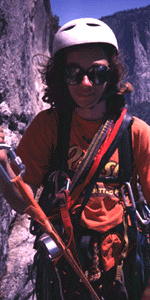
|
Daniel is on the ledge about to start pitch 16, which is short but requiring difficult
aid at the very end. You basically move from a tenuous, awkward, dangling position directly to the
anchors themselves. It was a fine ending to a wonderful experience. We were both somewhat sad that it had to end.
|

